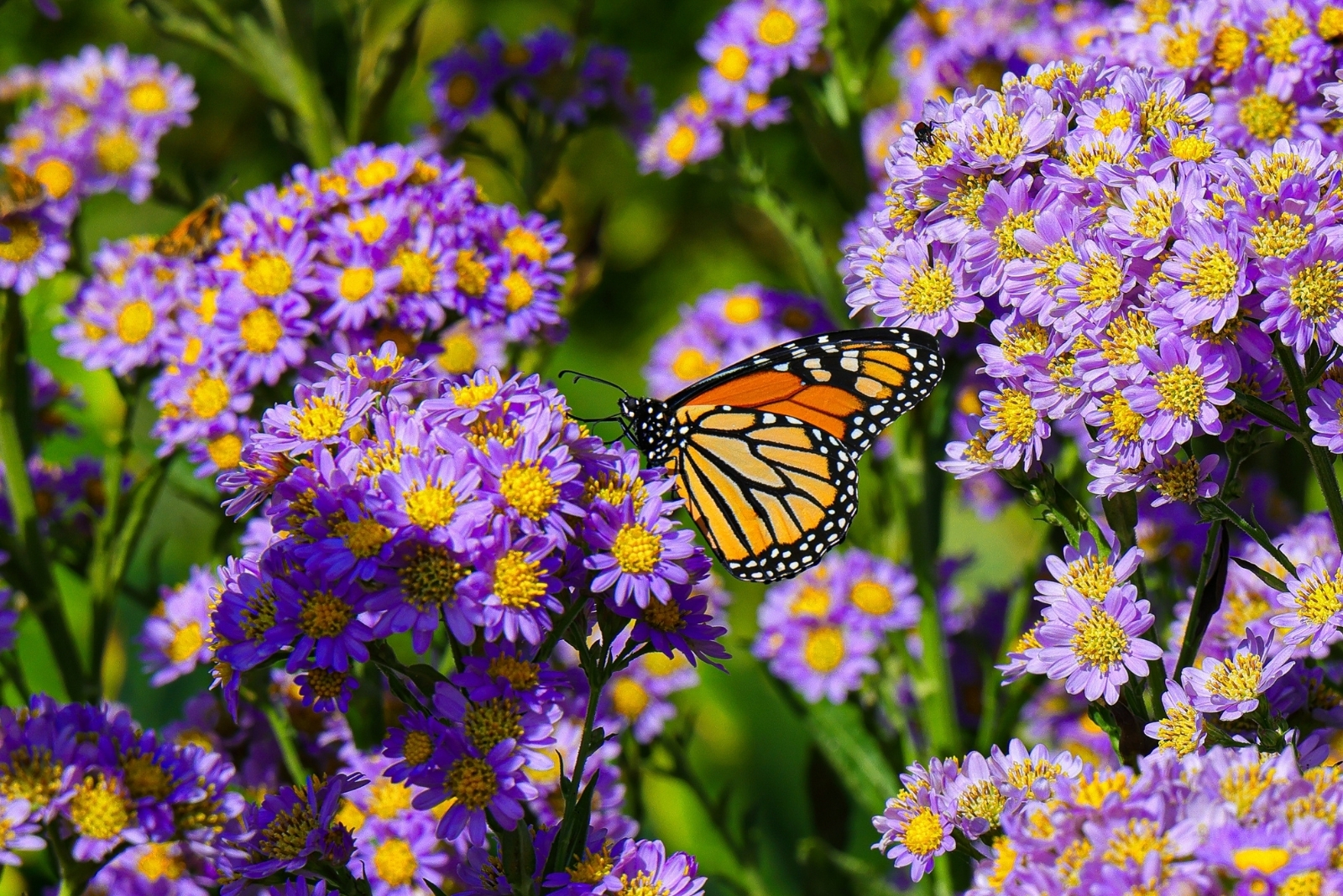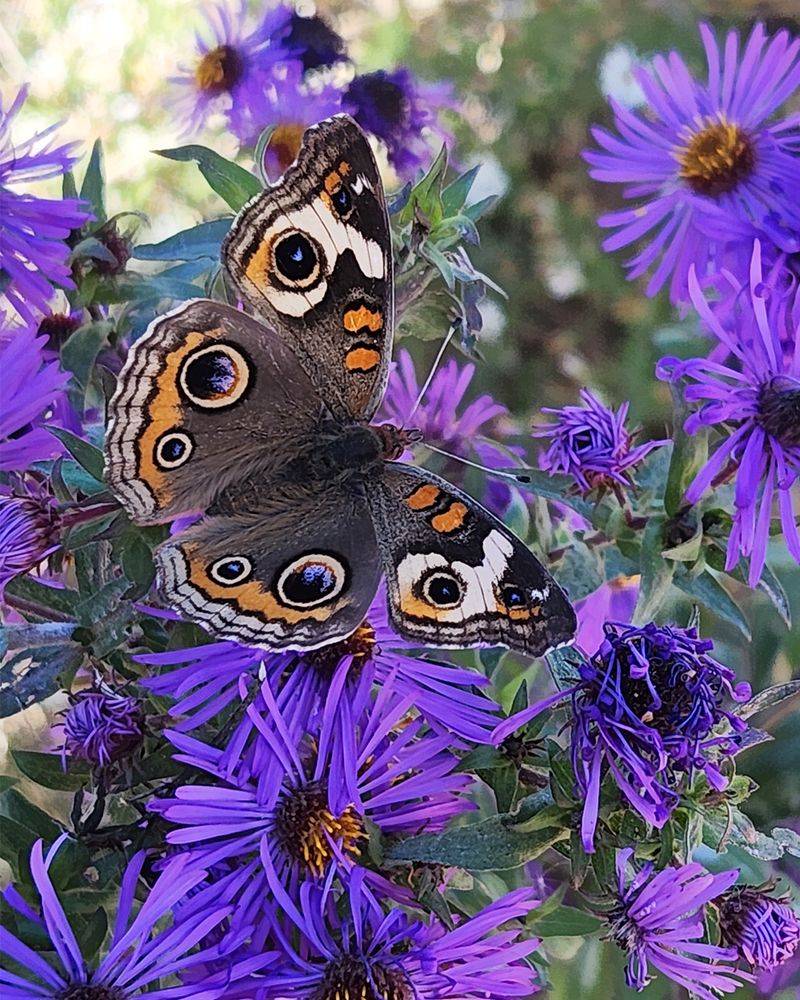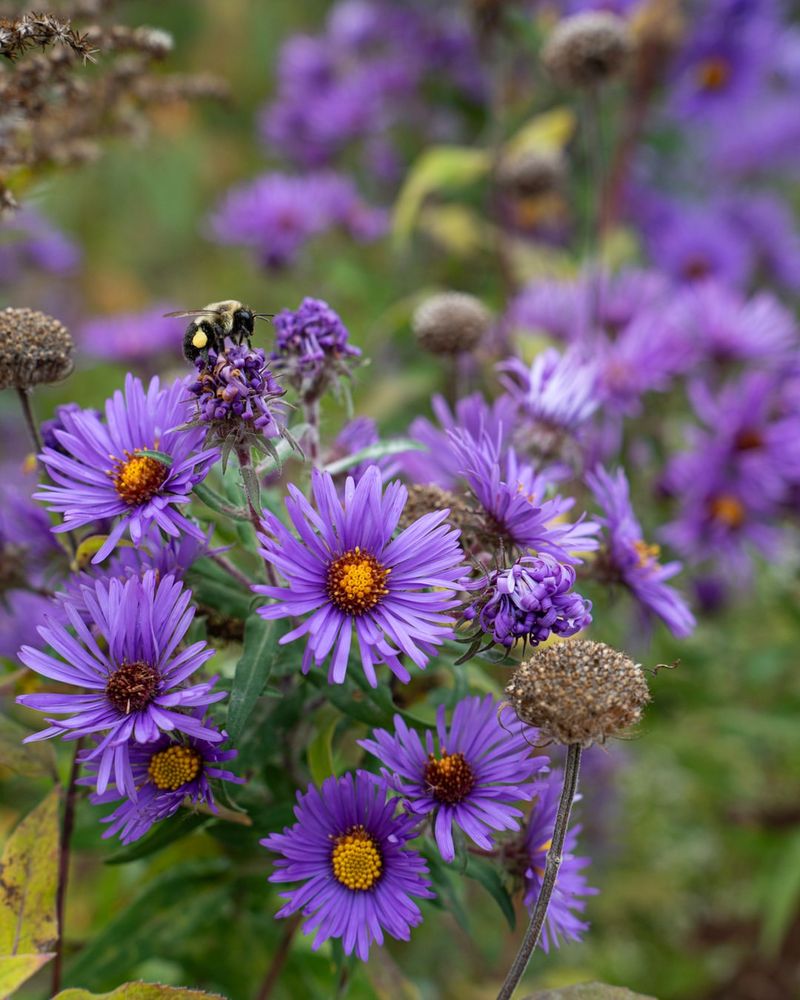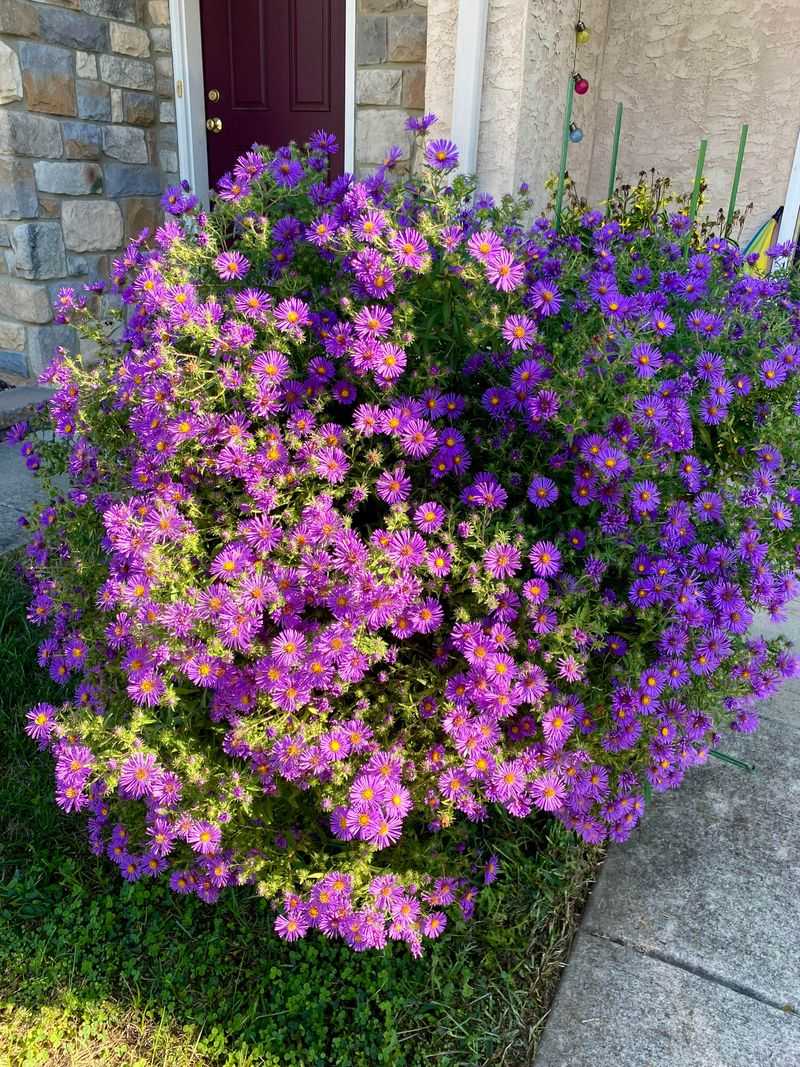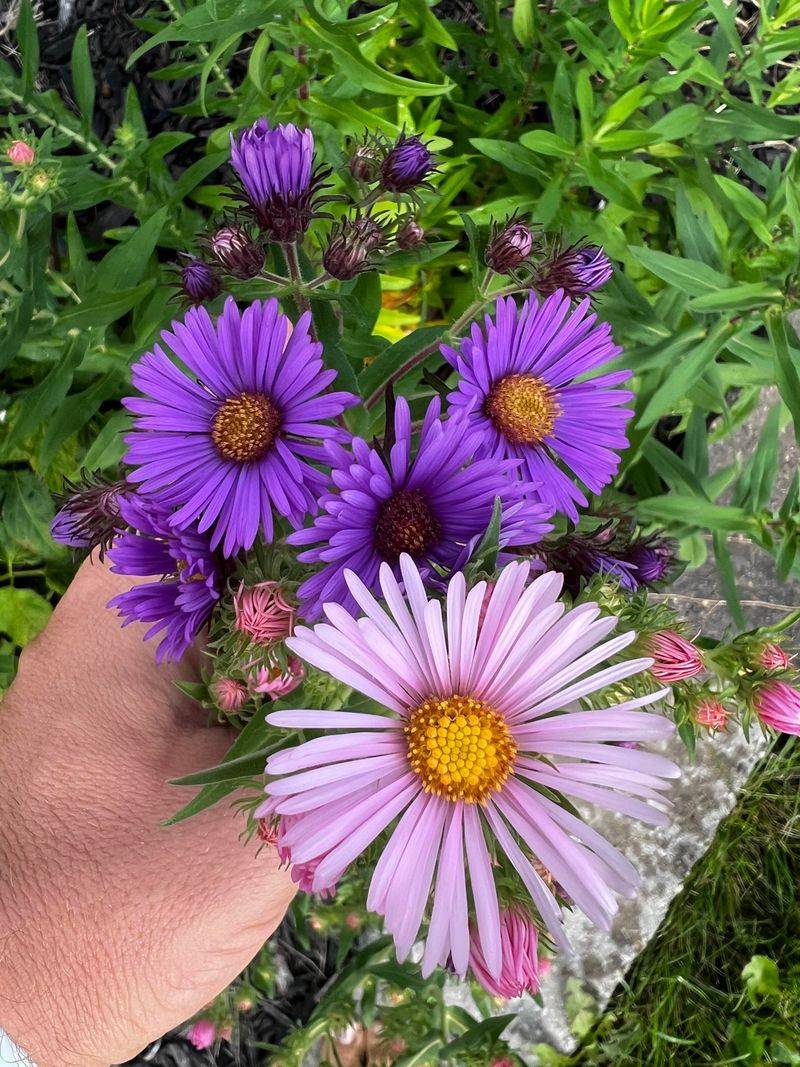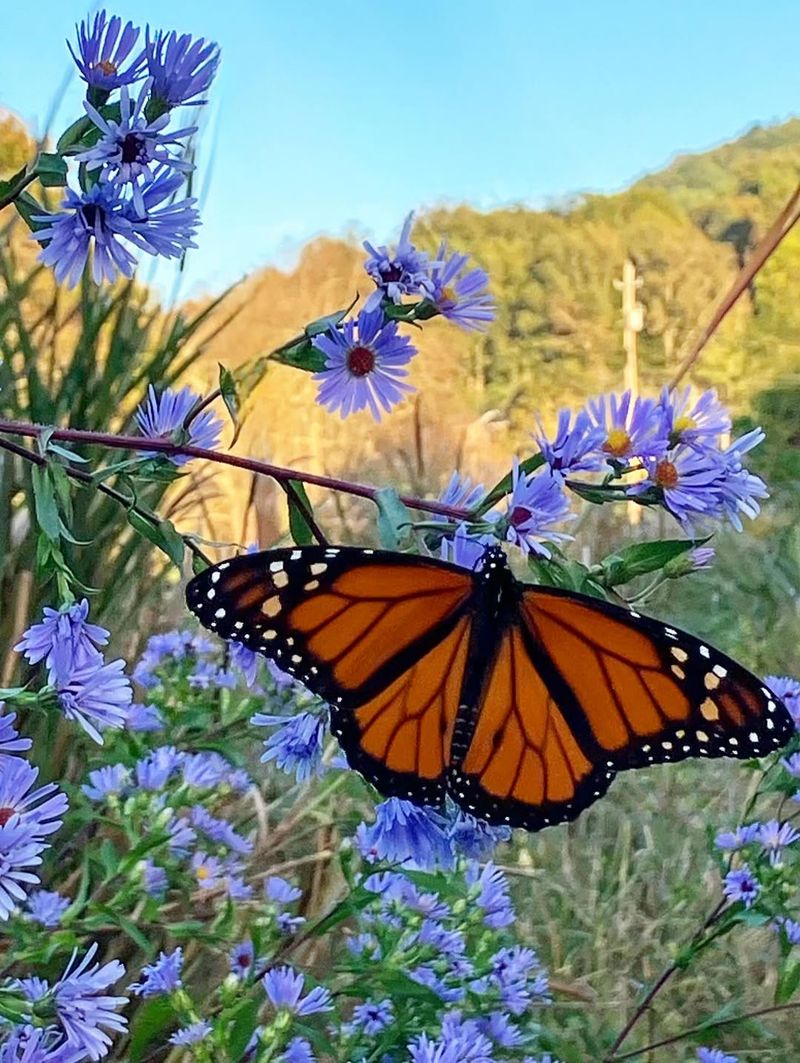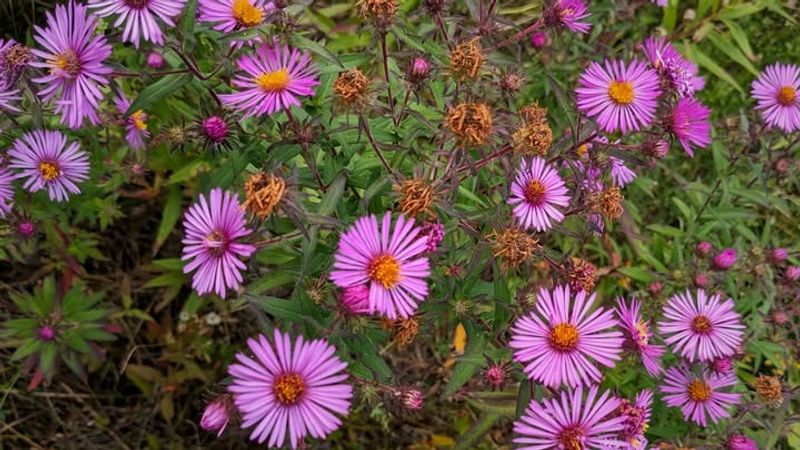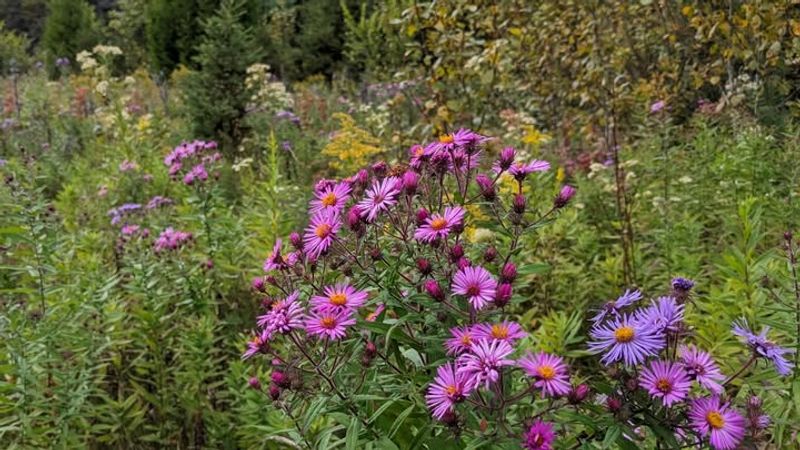If you’ve been spotting extra fluttery wings in your New York garden lately, chances are there’s one star plant stealing the show.
Say hello to New England asters, the vibrant bloom that butterflies can’t resist. Their purple and pink flowers light up late summer and fall, giving your garden a magical, flutter-filled finale to the season.
Plant a few, and you’ll quickly notice your backyard turning into a butterfly hotspot you can’t help but smile at.
1. Late-Season Nectar Buffet
When September and October arrive in New York, most flowers have already faded away for the year. New England asters bloom exactly when butterflies need them most, offering sweet nectar during a critical time.
Monarch butterflies preparing for their long migration south rely heavily on these late bloomers. The timing couldn’t be better for both plant and insect.
Gardeners across the state notice increased butterfly activity once their asters start flowering, creating spectacular displays of nature’s teamwork in action.
2. Bright Purple Beacon
Butterflies see colors differently than humans do, and purple happens to be one of their absolute favorites. The vivid purple petals of New England asters act like landing strips for flying insects.
From high above, these colorful blooms stand out against green foliage and brown earth. New York’s butterfly population can spot these flowers from impressive distances.
The contrast makes finding food sources much easier for creatures with compound eyes designed to detect ultraviolet patterns we cannot see.
3. Easy Landing Platform Design
Each aster flower features a flat, yellow center surrounded by thin petals, creating a perfect platform for butterflies to land and feed comfortably. The design is remarkably practical for insects of various sizes.
Unlike tubular flowers that require hovering, asters let butterflies rest while they drink. This saves precious energy that New York butterflies need for survival and migration.
The stable surface allows even smaller species to access the nectar without struggling, making asters universally welcoming to different butterfly types.
4. Clustered Blooms Mean More Food
One New England aster plant doesn’t produce just a single flower—it creates dozens or even hundreds of blooms all at once. Butterflies can visit multiple flowers without flying far, which is incredibly efficient.
Throughout New York gardens and wild spaces, these clustered arrangements act like all-you-can-eat buffets. Butterflies spend more time feeding and less time searching.
The abundance also means competition decreases, allowing many different butterfly species to share the same plant peacefully throughout the autumn season.
5. Native Plant Advantage
New England asters evolved alongside the butterflies that live in New York, creating a relationship that has developed over thousands of years. Native butterflies instinctively recognize these plants as reliable food sources.
Imported ornamental flowers often lack the chemical signals that local butterflies have learned to follow. Asters speak the right language to New York’s native insect population.
Planting native species like asters helps support the entire local ecosystem, not just the butterflies that visit your garden for a quick meal.
6. High Nectar Production
Not all flowers produce the same amount of nectar, and New England asters are particularly generous providers. Each tiny floret in the center disk contains sweet liquid fuel that butterflies desperately need.
During fall in New York, when temperatures start dropping, butterflies require extra energy to maintain body temperature. Asters deliver the high-quality nectar that powers their activities.
The sugar concentration in aster nectar is especially rich, meaning butterflies get maximum nutrition from every visit to these hardworking flowers.
7. Extended Blooming Period
While some flowers bloom for just a week or two, New England asters keep producing fresh flowers for six to eight weeks straight. This extended season is crucial for New York butterflies facing changing weather.
Early blooms feed butterflies in September, while late flowers support stragglers still active in October. The continuous supply helps various species at different life stages.
Gardeners appreciate this long-lasting display, and butterflies benefit from a reliable food source that doesn’t disappear overnight when conditions remain favorable.

